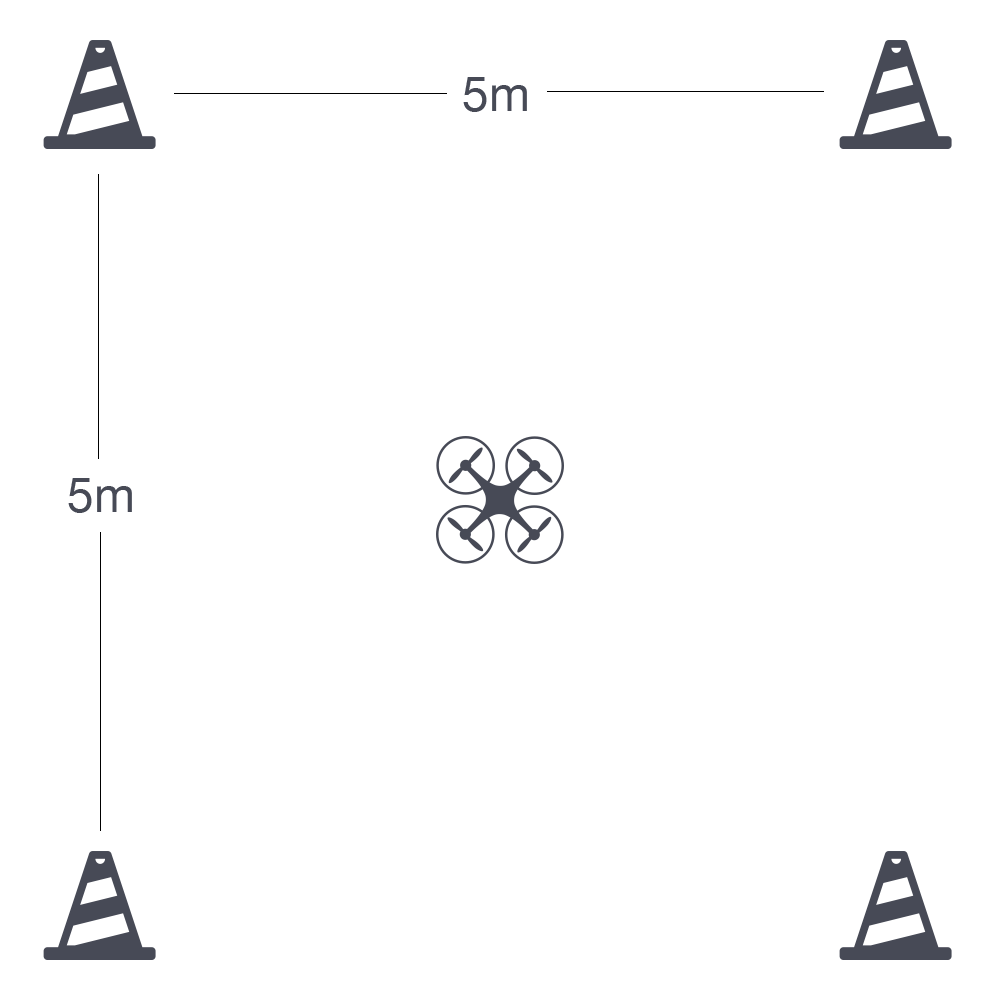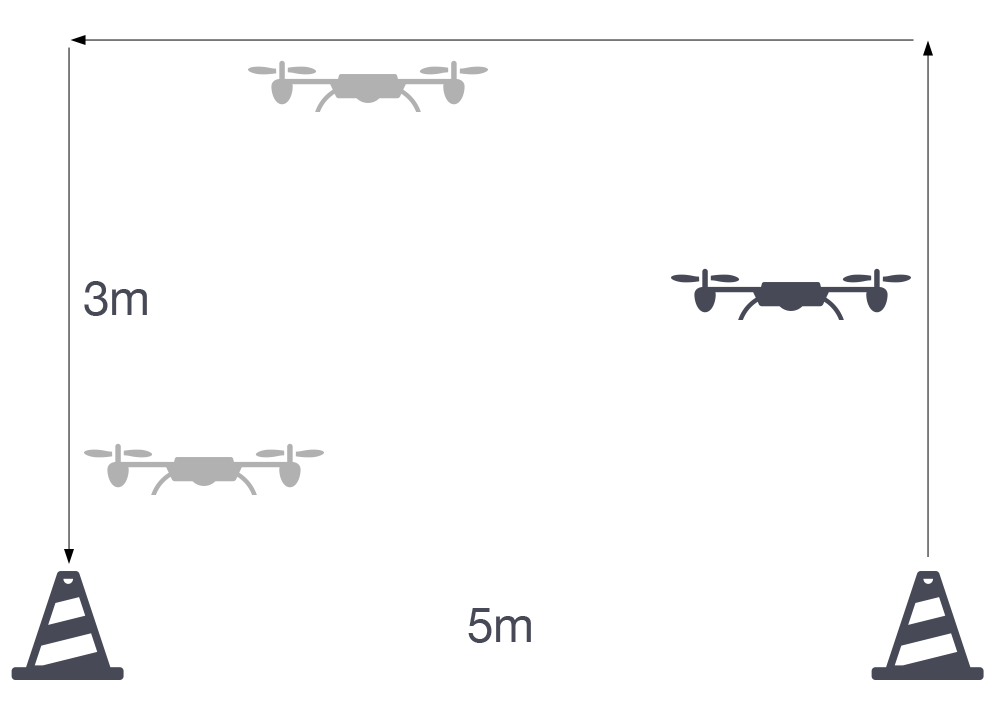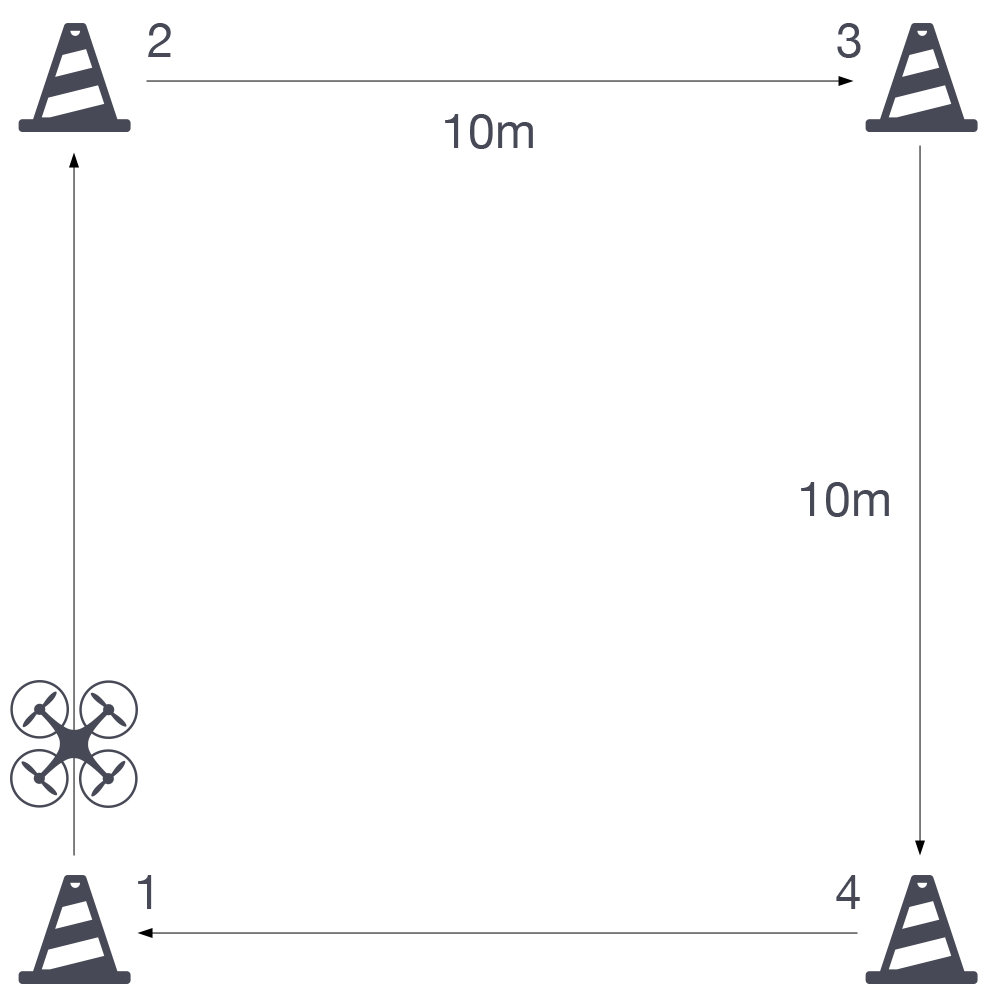Once the students are confident with basic flight operations, and the different operational modes of the drones, there are a series of activities they should complete to be deemed competent at flying the drones in a controlled and safe manner.
1. Take-Off and Landing
Students should follow the procedure outlined in the pre-flight checklist which they have written, which includes taking-off and performing a basic control check.
After successfully completing the checklist they should land the drone and then complete the post-flight checklist.
2. Hovering
Once students are comfortable with the take-off and landing procedures the next manoeuvre to practice is hovering. The AR.Drone has a feature called Hover Lock which uses the downwards facing camera to keep the drone in position when the pilot lets go of the controls. However, the drone can (and does) drift and the pilot needs to provide correction to maintain its position.

The control of the AR.Drone's are not as precise as other drones, so setup a 5m x 5m square using cones and then the activity for the students to keep the drone within that box for 10 minutes. This could be a challenging task, particularly if there is a slight breeze!
3. Up, Across, Down
This next activity will allow the students to practice controlling their drone doing a basic ascent, lateral movement, and then descent. This should be performed in relative flight mode with the drone facing away from the pilot (i.e. the pilot is standing behind the drone).
Place two cones 5m apart. The student needs to lift-off, fly to an altitude of around 3m, then fly 5m sideways (keeping the nose pointing away, tail facing towards the pilot), and then descent and land.

4. Up, Across, Down: Nose Sideways
Repeat the Up, Across, Down exercise in relative flight mode: lift-off, fly to an altitude of around 3m. However, instead of flying sideways, turn the nose of the drone to the direction in which you are flying and do the 5m flight across. Notice that you are now flying "off-axis" meaning that your perspective of the control direction is different to the drone as you are both facing a different direction.
It is important that the students master off-axis flight, as much of the time when they will be flying drones they will need to do flight manoeuvres where the drone is not facing the same orientation as the pilot.
5. Square
This activity will allow the students to practice off-axis flying. This should be performed in relative flight mode.
- Setup a 10m x 10m square.
- The student needs to take-off from cone 1 and fly straight ahead to cone 2.
- Then, turn the drone 90 degrees (the side of the drone should be facing the pilot) and fly to cone 3.
- Finally, turn 90 degrees again (at this point the front of the drone should be facing the direction of the pilot) and fly towards the final cone
- Hover over the top of the final cone for 10 seconds.
- Land.

This is perhaps one of the more challenging manoeuvres, as it is very easy to get control confusion when the drone is flying off-axis (i.e. not pointing in the same orientation as the pilot). However, it is an essential skill to master which comes with practice).
